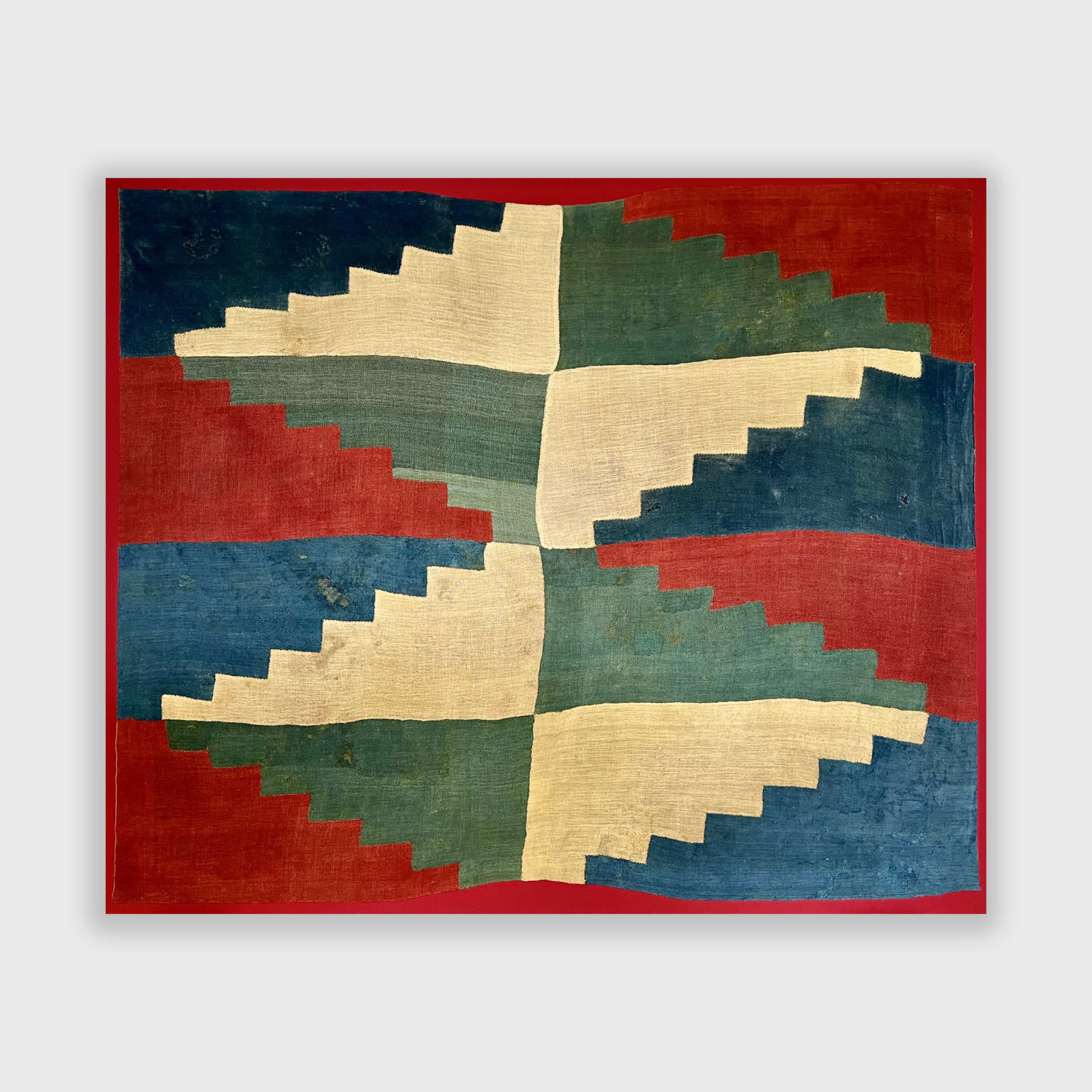


Nazca Culture 100 BC-800 AD
Nazca Complete Tunic, Circa. 500AD
Camelid fibres.
140 x 160 cm
55'1" x 62'9" in.
55'1" x 62'9" in.
NAZ0004
Copyright of Paul Hughes Fine Arts
Further images
This brilliantly executed example of bold Nazca/Huari textile aesthetics exemplifies the culture’s technical virtuosity in expressing abstractly the beliefs that man has the power to create order, transcend space and...
This brilliantly executed example of bold Nazca/Huari textile aesthetics exemplifies the culture’s technical virtuosity in expressing abstractly the beliefs that man has the power to create order, transcend space and time in a non-representative colourfield of geometrics representing the Andean Cross or Chakana. For, surely accustomed as we are with our late 20th century modes of perception freed from representational conventions, the visual impact of this cloth cannot fail to resonate with the archetypal heritage of abstraction inherent within us all.
Many related examples are in the Berlin museums much visited for inspirations by the Bauhaus founders, Johannes Itten, Josef Albers and Paul Klee. The Anni and Josef Albers personal collection also contain numerous related examples.
Amongst Uruguayan artists led by Torres Garcia in the 1930’s and by extension the Argentinian Madi Group led by Arden Quinn , there was a continuing influence from the former on the Concrete art school in Brazil in the 1940’s, all these various schools shared a common interest in the geometric art of pre-Columbian art of the Andean world and in particular the ancient textiles arts.
Many related examples are in the Berlin museums much visited for inspirations by the Bauhaus founders, Johannes Itten, Josef Albers and Paul Klee. The Anni and Josef Albers personal collection also contain numerous related examples.
Amongst Uruguayan artists led by Torres Garcia in the 1930’s and by extension the Argentinian Madi Group led by Arden Quinn , there was a continuing influence from the former on the Concrete art school in Brazil in the 1940’s, all these various schools shared a common interest in the geometric art of pre-Columbian art of the Andean world and in particular the ancient textiles arts.
Exhibitions
Frieze Cork Street 2022Join our mailing list
* denotes required fields
We will process the personal data you have supplied in accordance with our privacy policy (available on request). You can unsubscribe or change your preferences at any time by clicking the link in our emails.


